When a drug enters the body, it doesn’t generally target a particular part of the body. Paracetamol, for example, affects the whole body but its effects are felt at the source of pain.
Likewise, cancer drugs can be imprecise; some enter the bloodstream to treat cancer at various anatomical points in the body, some are aimed at a particular region but even then, if a tumor is besieged by a toxic drug, the healthy tissue surrounding the target can also be affected.
Many treatments for cancer – and other conditions – are becoming more targeted with the use of smart drug delivery systems, many based on nanoparticles. Researchers in Australia hope to improve cancer drug delivery with a new method to encourage polymer molecules to self-assemble into non-spherical nanoparticles.
Very little in nature is perfectly spherical. Most biological structures like cells, bacteria and viruses come in a variety of shapes including tubes, rods, and squashed spheres, or ellipsoids. But it has proved very difficult for scientists to synthesise particles that are not perfectly round.
Professor Pall Thordarson, School of Chemistry, The University of New South Wales (UNSW)
Recent News
According to Researchers, Your Breathing Patterns Could Hold the Key to Better Memory
Breathing synchronizes brain waves that support memory consolidation. A new study from Northwestern Medicine reports that, much like a conductor harmonizes various instruments in an orchestra to create a symphony, breathing [...]
The Hidden Culprit Behind Alzheimer’s Revealed: Microglia Under the Microscope
Researchers at the CUNY Graduate Center have made a groundbreaking discovery in Alzheimer’s disease research, identifying a critical link between cellular stress in the brain and disease progression. Their study focuses [...]
“Mirror Bacteria” Warning: A New Kind of Life Could Pose a Global Threat
Mirror life, a concept involving synthetic organisms with reversed molecular structures, carries significant risks despite its potential for medical advancements. Experts warn that mirror bacteria could escape natural biological [...]
Lingering Viral Fragments: The Hidden Cause of Long COVID
Long COVID, affecting 5-10% of COVID-19 patients, might be caused by the enduring presence of the virus in the body. Research suggests that viral fragments, possibly live, linger and lead to symptoms. Addressing [...]
Hidden Scars: How COVID Lockdowns Altered Teen Brains Forever
Research from the University of Washington revealed that COVID-19 lockdowns led to accelerated cortical thinning in adolescents, impacting brain development significantly. This effect was more pronounced in females than males, raising concerns about [...]
Simple Blood Test To Detect Dementia Before Symptoms Appear
UCLA researchers have identified placental growth factor (PlGF) as a potential blood biomarker for early detection of cognitive impairment and dementia. High PlGF levels correlate with increased vascular permeability, suggesting [...]
Investing Goldman Sachs asks ‘Is curing patients a sustainable business model?’
Goldman Sachs analysts attempted to address a touchy subject for biotech companies, especially those involved in the pioneering “gene therapy” treatment: cures could be bad for business in the [...]
The risks of reversed chirality: Study highlights dangers of mirror organisms
A groundbreaking study evaluates the feasibility, risks, and ethical considerations of creating mirror bacteria with reversed chirality, highlighting potential threats to health and ecosystems. In a recent study published [...]
Alarming Mutation in H5N1 Virus Raises Pandemic Red Flags
NIH-funded study concludes that the risk of human infection remains low A recent study published in Science and funded by the National Institutes of Health (NIH) has found that a single alteration in [...]
Scientists Discover Genetic Changes Linked to Autism, Schizophrenia
The Tbx1 gene influences brain volume and social behavior in autism and schizophrenia, with its deficiency linked to amygdala shrinkage and impaired social incentive evaluation. A study published in Molecular [...]
How much permafrost will melt this century, and where will its carbon go?
Among the many things global warming will be melting this century—sea ice, land glaciers and tourist businesses in seaside towns across the world—is permafrost. Lying underneath 15% of the [...]
A Physics Discovery So Strange It’s Changing Quantum Theory
MIT physicists surprised to discover electrons in pentalayer graphene can exhibit fractional charge. New theoretical research from MIT physicists explains how it could work, suggesting that electron interactions in confined two-dimensional spaces [...]
Inside the Nano-Universe: New 3D X-Ray Imaging Transforms Material Science
A cutting-edge X-ray method reveals the 3D orientation of nanoscale material structures, offering fresh insights into their functionality. Researchers at the Swiss Light Source (SLS) have developed a groundbreaking technique called [...]
X-chromosome study reveals hidden genetic links to Alzheimer’s disease
Despite decades of research, the X-chromosome’s impact on Alzheimer’s was largely ignored until now. Explore how seven newly discovered genetic loci could revolutionize our understanding of the disease. Conventional [...]
The Unresolved Puzzle of Long COVID: 30% of Young People Still Suffer After Two Years
A UCL study found that 70% of young people with long Covid recovered within 24 months, but recovery was less likely among older teenagers, females, and those from deprived [...]
Needle-Free: New Nano-Vaccine Effective Against All COVID-19 Variants
A new nano-vaccine developed by TAU and the University of Lisbon offers a needle-free, room-temperature-storable solution against COVID-19, targeting all key variants effectively. Professor Ronit Satchi-Fainaro’s lab at Tel Aviv [...]
Photoacoustic PDA-ICG Nanoprobe for Detecting Senescent Cells in Cancer
A study in Scientific Reports evaluated a photoacoustic polydopamine-indocyanine green (PDA-ICG) nanoprobe for detecting senescent cells. Senescent cells play a role in tumor progression and therapeutic resistance, with potential adverse effects [...]
How Dysregulated Cell Signaling Causes Disease
Cell signaling is crucial for cells to communicate and function correctly. Disruptions in these pathways, caused by genetic mutations or environmental factors, can lead to uncontrolled cell growth, improper [...]
Scientists Develop Super-Strong, Eco-Friendly Plastic That Bacteria Can Eat
Researchers at the Weizmann Institute have developed a biodegradable composite material that could play a significant role in addressing the global plastic waste crisis. Billions of tons of plastic [...]
Building a “Google Maps” for Biology: Human Cell Atlas Revolutionizes Medicine
New research from the Human Cell Atlas offers insights into cell development, disease mechanisms, and genetic influences, enhancing our understanding of human biology and health. The Human Cell Atlas [...]
Bioeconomic Potential: Scientists Just Found 140 Reasons to Love Spider Venom
Researchers at the LOEWE Centre for Translational Biodiversity Genomics (TBG) have discovered a significant diversity of enzymes in spider venom, previously overshadowed by the focus on neurotoxins. These enzymes, [...]
Quantum Algorithms and the Future of Precision Medicine
Precision medicine is reshaping healthcare by tailoring treatments to individual patients based on their unique genetic, environmental, and lifestyle factors. At the forefront of this revolution, the integration of [...]
Scientists Have Discovered a Simple Supplement That Causes Prostate Cancer Cells To Self-Destruct
Menadione, a vitamin K precursor, shows promise in slowing prostate cancer in mice by disrupting cancer cell survival processes, with potential applications for human treatment and myotubular myopathy therapy. [...]
Scientists reveal structural link for initiation of protein synthesis in bacteria
Within a cell, DNA carries the genetic code for building proteins. To build proteins, the cell makes a copy of DNA, called mRNA. Then, another molecule called a ribosome [...]
Vaping Isn’t Safe: Scientists Uncover Alarming Vascular Risks
Smoking and vaping impair vascular function, even without nicotine, with the most significant effects seen in nicotine-containing e-cigarettes. Researchers recommend avoiding both for better health. Researchers have discovered immediate [...]
Twice-Yearly Lenacapavir for PrEP Reduces HIV Infections by 96%
Twice-yearly injections of the capsid inhibitor drug lenacapavir can prevent the vast majority of HIV infections, according to a Phase 3 clinical trial published Wednesday in the New England [...]
Did Social Distancing Begin 6,000 Years Ago? Neolithic Villagers May Have Invented It
Social distancing may have roots 6,000 years ago, as research shows Neolithic villages like Nebelivka used clustered layouts to control disease spread. The phrase “social distancing” became widely recognized [...]
Decoding Alzheimer’s: The Arctic Mutation’s Role in Unusual Brain Structures
Researchers have uncovered how certain genetic mutations lead to unique spherical amyloid plaques in inherited forms of Alzheimer’s, offering insights that could advance our understanding of the disease and improve [...]
How Your “Lizard Brain” Fuels Overthinking and Social Anxiety
New research by Northwestern Medicine reveals how humans have evolved advanced brain regions to interpret others’ thoughts, connecting these areas with the amygdala, a part of the brain involved [...]
How Did Life Begin? Researchers Discover Game-Changing Clue
New research offers a potential explanation for the formation of early Earth protocells. Few questions have captivated humankind more than the mystery of life’s origins on Earth. How did [...]
Printable organic X-ray sensors may transform treatment for cancer patients
An international research team, led by the University of Wollongong (UOW), has found wearable organic X-ray sensors could offer safer radiotherapy protocols for cancer patients. More than 400 people [...]
Unlocking AI’s Potential: MIT’s New Algorithm Boosts Efficiency by 50x
MIT researchers have introduced an efficient reinforcement learning algorithm that enhances AI’s decision-making in complex scenarios, such as city traffic control. By strategically selecting optimal tasks for training, the algorithm [...]
Are Smaller Brains the Future? How AI Could Reshape Human Evolution
AI and Human Evolution As artificial intelligence (AI) becomes increasingly widespread and advanced, it prompts new questions about its impact on human life and society. A recent paper in The Quarterly Review [...]
Antibiotic activity altered by interaction with nanoplastics, new research shows
In a recent study published in Scientific Reports, researchers reported that drug adsorption on micro- and nano-plastics (MNPs) has severe consequences. Introduction Plastic degradation results in the formation of particles [...]
World First: Stem Cell Transplant Restores Vision in Multiple People
A radical stem cell transplant has significantly improved the blurry vision of three people with severe damage to their cornea. The clinical trial, which took place in Japan, is the first of [...]
Clinical Trial: Mushroom Supplement May Halt Prostate Cancer Growth
The bidirectional research examines both laboratory findings and human clinical trial data, revealing that the medicinal use of white button mushrooms reduces the type of cells that suppress the [...]
Scientists propose drug-free method to combat antibiotic-resistant bacteria
Recent estimates indicate that deadly antibiotic-resistant infections will rapidly escalate over the next quarter century. More than 1 million people died from drug-resistant infections each year from 1990 to [...]
New study shows how salmonella tricks gut defenses to cause infection
A new UC Davis Health study has uncovered how Salmonella bacteria, a major cause of food poisoning, can invade the gut even when protective bacteria are present. The research, published in [...]
Chlamydia vaccine shows early promise in mice
An experimental vaccine has shown promise in protecting against the sexually transmitted disease chlamydia, researchers report. Lab mice given the vaccine were able to rapidly clear subsequent chlamydia infections, [...]
Contradictory Discovery: Our Innate Immune System May Fuel Cancer Development
MSK researchers discovered that the innate immune system’s chronic activation due to issues in the Mre11 complex can lead to cancer, highlighting new therapeutic targets. In addition to defending [...]
New study links circadian gene variants to winter depression
Findings suggest that PER3 gene variants prevent adrenal adaptation to winter daylight, leading to serotonin disruption and depression-like behaviors. A recent study in Nature Metabolism used humanized mice with modified PERIOD3 [...]
Quantum Leap for MRI: Atomic Sensors Unlock New Imaging Potential
New atomic sensor technology enhances MRI quality control by tracking hyperpolarized molecules in real-time, with potential benefits for various scientific fields. Magnetic resonance imaging (MRI) is a fundamental tool [...]
MethylGPT unlocks DNA secrets for age and disease prediction
By harnessing advanced AI, MethylGPT decodes DNA methylation with unprecedented accuracy, offering new paths for age prediction, disease diagnosis, and personalized health interventions. In a recent study posted to [...]
“Astonishing” – Scientists Unveil First Blueprint of the Most Complex Molecular Machine in Human Biology
Researchers unveil the inner mechanisms of the most intricate and complex molecular machine in human biology. Scientists at the Centre for Genomic Regulation (CRG) in Barcelona have developed the [...]
Breakthrough research reveals how to target malignant DNA in aggressive cancers
Scientists have discovered a way to target elusive circular fragments of DNA that drive the survival of some of the most aggressive cancers, paving the way for future treatments. [...]
How bacteria trigger colon cancer
In a recent study published in Nature, scientists used murine models to investigate how certain bacteria, such as Escherichia coli strains that contain a polyketide synthase (pks) island encoding enzymes that produce [...]
Nanoparticles designed to trap and neutralise large amounts of SARS-CoV2
(Nanowerk News) Researchers from the IBB-UAB have developed a new class of nanostructures capable of trapping and neutralising large quantities of the SARS-CoV2 virus particles, both in liquid solutions [...]
Nanodiscs: What Are They and How Are They Shaping the Future of Medicine?
Nanodiscs are synthetic phospholipid particles with a distinct morphology and size that enhance their efficiency in drug delivery applications.1 First developed by Sligar et al. in the early 2000s, these model [...]
New Discovery Reveals How Ovarian Cancer Starves Immune Cells
Researchers discovered that ovarian tumors hinder T cells’ energy supply by trapping a key protein, blocking lipid uptake. A new approach to reprogram T cells could enhance immunotherapy for [...]
Innovative Drug-Design Strategies to Overcome Antibacterial Resistance
Antibacterial resistance occurs when antibiotics fail to treat bacterial infections. This incidence is considered one of the top global health threats, stemming from the misuse or overuse of antibiotics [...]
Team introduces a cost-effective method to redesign search engines for AI
The internet search engine of the future will be powered by artificial intelligence. One can already choose from a host of AI-powered or AI-enhanced search engines—though their reliability often [...]
Experiments demonstrate precise delivery of nanoparticles to lung
In recent years, bio-medical engineers have been developing promising techniques that could help diagnose diseases or precisely target specific regions inside the human body. Among these promising therapeutic strategies [...]
What is Lassa fever? Everything to know about Ebola-like virus
Lassa fever has reached the US for the first time in a decade, in a case that has surprised health officials. The middle-aged patient in Iowa, who was not identified, died a [...]
Harvard Study Links Popular Plastic Ingredient to DNA Damage
Phthalate affects egg formation in C. elegans, resulting in abnormal chromosome numbers. A recent study conducted on roundworms has discovered that a common plastic ingredient can cause DNA strand breaks, leading to [...]
New research finds that subtle eye movements optimize vision
Our ability to see starts with the light-sensitive photoreceptor cells in our eyes. A specific region of the retina, termed fovea, is responsible for sharp vision. Here, the color-sensitive [...]
Scientists Were Wrong: Plants Absorb 31% More CO2 Than Previously Thought
New research shows plants absorb 31% more CO2 than previously estimated, raising the global GPP to 157 petagrams per year. Using carbonyl sulfide as a proxy for photosynthesis, this study [...]
Doctors test first mRNA vaccine against norovirus
According to the Robert Koch Institute (RKI), the norovirus, which is widespread worldwide, is the cause of a large proportion of gastrointestinal infections. Those who catch the virus suffer [...]
Study reveals resistance of Pseudomonas aeruginosa to common cleaning agents
A new study reveals widespread resistance of a major bacterial pathogen to the active ingredients in cleaning agents commonly used in hospitals and homes. The American Chemical Society Infectious [...]
AI’s Next Frontier: System 0 and the Future of Human Thought
“System 0” represents an emerging cognitive tool powered by AI that works alongside human intuition and analysis to enhance cognitive abilities. This new system promises to support complex decision-making [...]
The Global Nanomedicine Market: Key Players and Emerging Technologies in Healthcare
This article provides an overview of the global nanomedicine market, highlighting key players, emerging technologies, and the challenges and opportunities that influence its growth and commercialization in the healthcare [...]
Scientists Have Discovered Toxic “Forever Chemicals” in Bottled Water
Scientists have found toxic PFAS in drinking water samples from around the world, with higher levels in tap water from China compared to the UK. Boiling water or using [...]
Urban Microbes Are Eating Disinfectants – Are We Fueling a New Health Threat?
New research reveals that microbes in urban environments are evolving to withstand the very cleaning agents designed to eliminate them. The study also uncovers new strains in Hong Kong, [...]
Startling Study Shows High-Potency Cannabis Alters DNA
The study shows that frequent use of high-potency cannabis alters DNA, affecting genes related to energy and immune function. These changes differ between those with and without psychosis, suggesting cannabis use could [...]
New nanotherapy targets artery inflammation in cardiovascular disease
Inflammation of the arteries is a primary precursor and driver of cardiovascular disease—the No. 1 killer of people in the United States. This inflammation is associated with the buildup [...]
Revolutionary Nanoparticle Therapy for Prostate Cancer
A groundbreaking research effort involving teams from the University of Virginia, Mount Sinai, the University of Michigan, the University of Texas, and others has displayed the clinical efficacy of an innovative [...]
Antibody engineering drives innovation in drug development
Monoclonal antibodies (mAbs) are used to prevent, detect, and treat a broad spectrum of non-communicable and communicable diseases. Over the past few years, the market for mAbs has grown [...]
Breakthrough Study Reveals How Bladder Cancer Starts and Spreads
Researchers found that DNA mutations from antiviral enzymes and chemotherapy fuel early bladder cancer, while abnormal circular DNA in tumor cells drives resistance to therapy. These discoveries open new therapeutic avenues. [...]
AI and Quantum Mechanics Accelerate Drug Discovery
A recent article published in the Journal of Chemical Information and Modeling researchers at Southern Methodist University (SMU) have developed SmartCADD, an open-source [...]
Targeting ‘undruggable’ diseases: Researchers reveal new levels of detail in targeted protein degradation
Researchers at the University of Dundee have revealed in the greatest detail yet the workings of molecules called protein degraders which can be deployed to combat what have previously [...]
Revolutionizing Virology: AI Discovers Over 160,000 New RNA Viruses
Largest discovery of new virus species sheds light on the hidden virosphere. Artificial intelligence (AI) has been used to reveal details of a diverse and fundamental branch of life living right under [...]
Cardiac Crisis: COVID-19 Doubles Risk of Heart Attacks, Strokes, and Death
Research indicates that COVID-19 survivors face doubled risks of severe cardiac events for years after recovery, especially if hospitalized. People with A, B, or AB blood types are particularly vulnerable, highlighting [...]
AI steps into science limelight with Nobel wins
For long periods of its history, artificial intelligence has lurked in the hinterland of science, often unloved and unfunded—but two Nobel prizes in one week suggest its time in [...]
MIT Scientists Shed New Light on the Critical Brain Connections That Define Consciousness
A new study provides further evidence that consciousness depends on communication between the brain’s sensory and cognitive regions in the cortex. Our brains are constantly making predictions about our [...]
Common Chemicals Found in Shampoo and Plastic Could Be Quietly Disrupting Your Heart’s Rhythm
UC study of Fernald data links environmental phenols to heart toxicities Environmental phenols are present in numerous everyday consumer products, serving as preservatives in packaged foods, parabens in shampoos, [...]
Revolutionary Brain Tech Offers New Hope for Stroke and Injury Recovery
University of Pittsburgh researchers report that deep brain stimulation (DBS) can effectively enhance motor functions in individuals with arm and hand paralysis due to brain injuries, with promising results [...]
NIH Scientists Discover Gene Responsible for Rare Eye Disease
Findings supported by the NIH pave the way for the development of genetic testing, clinical trials, and therapies. Researchers at the National Institutes of Health (NIH) and their collaborators have discovered [...]
Alzheimer’s Breakthrough: Synthetic THC Pill Proves Effective in Clinical Trial
Patients tolerated synthetic THC (dronabinol) well, without the adverse effects commonly associated with existing Alzheimer’s agitation medications. A study conducted by researchers from Johns Hopkins University School of Medicine and Tufts University School of [...]
The Future of Rare Disease Treatment with Precision Medicine
Understanding rare diseases Rare diseases affect less than 5 people out of 10,000. However, this still amounts to about 7% of the world’s population, with over 10,000 such conditions. [...]
Doctors issue warning for upcoming ‘tripledemic
The term ‘tripledemic’ has hit headlines this week as the NHS begins its Covid and fluvaccine roll-out for vulnerable adults. As the cold weather sets in, many of us have experienced a decline [...]
The FDA approved a gel that can stop bleeding from wounds in seconds
Aug 15 (Reuters) - The U.S. Food and Drug Administration has cleared Cresilon's gel to quickly control bleeding, the privately held company said on Thursday, potentially giving emergency medical [...]
High levels of microplastics found in prostate tumors, possibly linked to take-out food
The presence of microplastics in prostate tumors points to potential health risks, and researchers are calling for urgent studies to explore how take-out food may be driving this exposure. [...]
AI outperforms radiologists in brain tumor diagnosis
As artificial intelligence advances, its uses and capabilities in real-world applications continue to reach new heights that may even surpass human expertise. In the field of radiology, where a correct [...]
Breakthrough Study Reveals Molecular Clues to Dementia Origins
Work could lead to the discovery of new therapeutic targets. For the first time, researchers have identified “molecular markers” linked to degeneration—detectable changes in cells and their gene-regulating networks—that [...]
Better than blood tests? Nanoparticle potential found for assessing kidneys
In a study published July 29 in Advanced Materials, University of Texas at Dallas researchers found that X-rays of the kidneys using gold nanoparticles as a contrast agent might be [...]
Greener nanomaterials could transform how our everyday stuff is made
Tiny nanoparticles are at the forefront of materials science—with special properties that make them great at absorbing light in solar panels, cleaning wastewater, and delivering drugs precisely. Some nanoparticles take the form of sheets [...]
AI could predict breast cancer risk via ‘zombie cells’
Women worldwide could see better treatment with new AI technology, which enables better detection of damaged cells and more precisely predicts the risk of getting breast cancer, [...]
Through the eyes of a cat – biomimicry of feline eyes may revolutionize robotic vision
In a recent study published in the journal Science Advances, researchers leveraged crucial aspects of feline eyes, particularly their tapetum lucidum and vertically elongated pupils (VP), to develop a monocular [...]
New Alzheimer’s Therapy Shows Remarkable Results in Animal Trials
A study from TUM demonstrates a promising therapeutic approach. Researchers at the Technical University of Munich (TUM) have made promising advances in preventing Alzheimer’s by developing a new therapeutic strategy. Their approach focuses [...]
Rewriting Cancer’s Blueprint: New Study Challenges Old Theories
A new study argues for a revised clonal evolution model of cancer, incorporating genetic and non-genetic factors to improve understanding and treatment. Like all living organisms, cancer cells are [...]
Microplastics Everywhere: Experts Demand Worldwide Treaty Before It’s Too Late
A new report calls for global action on plastic pollution, urging reductions in plastic production and microplastic emissions. Researchers stress the importance of addressing plastic pollution through both scientific [...]
Blood tests could soon predict your risk of Alzheimer’s
Scientists are closing in on biomarkers that reflect the progression of Alzheimer’s disease and could improve treatments. Like many Alzheimer’s researchers, neurologist Randall Bateman is not prone to effusiveness, [...]
Recharging mitochondria—nanoflowers offer a new way to simulate energy production
When we need to recharge, we might take a vacation or relax at the spa. But what if we could recharge at the cellular level, fighting against aging and [...]
Revealing the Invisible: Living Cells Can Be Seen With Infrared Light
IST’s new infrared microscopy technique allows for the detailed imaging of biomolecules in cells, supporting advancements in biotechnology and cellular therapies. In an effort to advance biotechnology innovations, scientists [...]
3,600+ Chemicals From Food Packaging Found in Human Bodies
A recent review has uncovered the widespread presence of food contact chemicals (FCC) in humans, identifying 3,601 chemicals used in food packaging and related products found in the human [...]
CREME: A New AI-Powered Virtual Lab to Help Cure Genetic Diseases
CREME, an AI-powered virtual lab, developed at Cold Spring Harbor Laboratory, offers a revolutionary approach to genetic research by simulating CRISPR interference (CRISPRi). This tool enables scientists to perform [...]
New Research Reveals That Cannabis Can Reverse Brain Aging
Researchers in Bonn examine how treatment with tetrahydrocannabinol affects the mTOR metabolic pathway. A low-dose, long-term administration of cannabis has been shown to not only reverse aging processes in the brain [...]
Cardiovascular risks of COVID-19 antivirals
Several antivirals, including remdesivir, Paxlovid, molnupiravir, and monoclonal antibodies like tixagevimab and cilgavimab, have been repurposed to treat the coronavirus disease 2019 (COVID-19) or received emergency use authorization (EUA). [...]
Your eyes could reveal the first signs of many diseases
Melissa, a 30-year-old educator, came to the emergency department with a sudden onset of double vision. She had not been in an accident or suffered any trauma and had [...]
New insight into the causes of autoimmune diseases
Autoimmune diseases are widespread and notoriously difficult to treat. In part, this is because why the immune system attacks its own tissues in patients with these conditions remains poorly [...]
COVID-19 reduces male fertility by affecting semen quality and hormone levels
In a recent study published in the journal PLOS ONE, researchers conducted a systematic review and meta-analyzed data on the impact of coronavirus disease 2019 (COVID-19) on male reproductive hormones [...]
New Alzheimer’s Study Unlocks the Secrets of Aging Brain Cells
New method uses patient-derived neurons to effectively simulate late-onset Alzheimer’s and identify possible treatments. Researchers at Washington University School of Medicine in St. Louis have created a technique to explore the impact of [...]
Lockdowns prematurely aged teenagers’ brains, study suggests
Teenage girls' brains may have prematurely aged by up to four years during the Covid pandemic, an American study suggests. Adolescent boys weren't immune either with their brain's also [...]
Long COVID Still a Mystery: Routine Labs Show No Reliable Biomarkers
Routine lab tests are not reliable for diagnosing Long COVID, according to a new study. The research found that no clinical lab values could serve as biomarkers, highlighting the [...]
Tiny magnetic robots could treat bleeds in the brain
Researchers have created nanoscale robots which could be used to manage bleeds in the brain caused by aneurysms. The development could enable precise, relatively low-risk treatment of brain aneurysms, which [...]
Turning Mosquito Spit Into a Weapon Against the West Nile Virus and Other Deadly Diseases
Anita Saraf investigates mosquito saliva to understand how viruses like dengue and West Nile are transmitted, using mass spectrometry to identify potential targets for vaccines and treatments. You might [...]
Ethics in Nanomedicine: Key Issues and Principles
Nanomedicine, a branch of nanotechnology, is revolutionizing healthcare by enabling the manipulation of materials at the nanoscale to diagnose, treat, and prevent diseases. Unlike traditional treatments, nanoparticles (NPs) are [...]
A call for robust H5N1 influenza preparedness and response
As the global threat of H5N1 influenza looms with outbreaks across species and continents including the U.S., three international vaccine and public health experts say it is time to [...]
Mucosal COVID-19 boosters outperform mRNA shots in preventing upper airway infections
In a recent study published in Nature Immunology, a team of researchers from the United States used non-human primate models to compare the protection conferred by an intramuscular booster dose [...]
How Space Travel Really Changes Astronauts – From the Inside Out
International team reveals previously unknown effects on physiology that could shape the future of long-duration space missions. Researchers have discovered significant changes in the gut microbiome due to spaceflight, [...]
Breakthrough in blood stem cell development offers hope for leukemia and bone marrow failure
Melbourne researchers have made a world first breakthrough into creating blood stem cells that closely resemble those in the human body. And the discovery could soon lead to personalized [...]
Scientists Develop Game-Changing Needle-Free COVID-19 Intranasal Vaccine
A new mucosal COVID-19 vaccine poised to revolutionize the delivery process is especially beneficial for those with a fear of needles. A next-generation COVID-19 mucosal vaccine is set to be a [...]
Scientists Develop All-in-One Solution To Catch and Destroy “Forever Chemicals”
A new water treatment system developed by UBC researchers efficiently removes and destroys PFAS pollutants using a dual-action catalyst, offering a sustainable and cost-effective solution for water purification challenges. [...]
New method accelerates drug discovery from years to months
Researchers from the University of Cincinnati College of Medicine and Cincinnati Children's Hospital have found a new method to increase both speed and success rates in drug discovery. The [...]
A new smart mask analyzes your breath to monitor your health
Your breath can give away a lot about you. Each exhalation contains all sorts of compounds, including possible biomarkers for disease or lung conditions, that could give doctors a [...]
Study reveals the role of blood clotting in COVID-19
In a study that reshapes what we know about COVID-19 and its most perplexing symptoms, scientists have discovered that the blood coagulation protein fibrin causes the unusual clotting and [...]
A Novel Cancer Vaccine Combining Nano-11 and ADU-S100
In a recent article published in npj Vaccines, researchers detailed the development of a novel cancer vaccine that combines a plant-derived nanoparticle adjuvant, Nano-11, with a clinically tested STING agonist, [...]
AI spots cancer and viral infections with nanoscale precision
Researchers have developed an artificial intelligence which can differentiate cancer cells from normal cells, as well as detect the very early stages of viral infection inside cells. The findings, [...]
Tiny shards of plastic are increasingly infiltrating our brains, study says
Human brain samples collected at autopsy in early 2024 contained more tiny shards of plastic than samples collected eight years prior, according to a preprint posted online in May. A preprint is a [...]
Scientists Have Discovered Strange DNA in Our Brains – and It Could Be Shortening Our Lives
According to the research, these mitochondrial DNA insertions could be linked to early death. Mitochondria in brain cells frequently insert their DNA into the nucleus, potentially impacting lifespan, as those with [...]
Watch Out After a Hospital Stay: You Could Be Exposing Your Family to Superbugs
Research indicates hospitals contribute to the local spread of antibiotic-resistant infections. A recent study published in the journal Infection Control & Hospital Epidemiology by the Society for Healthcare Epidemiology of America [...]






































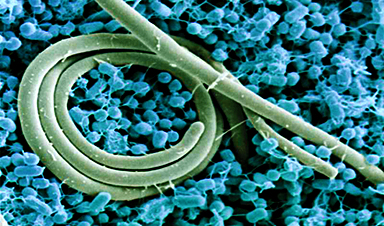























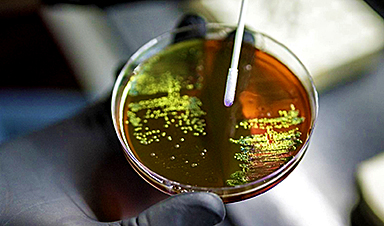
















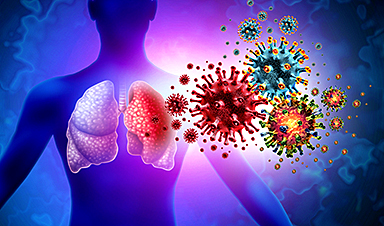



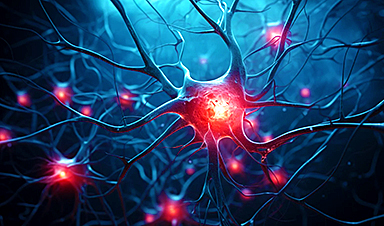

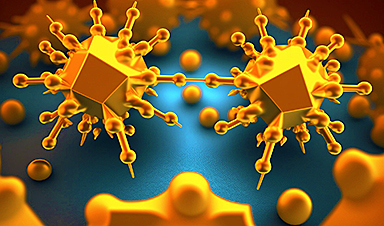
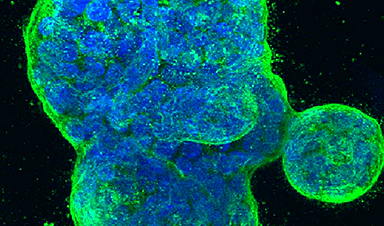












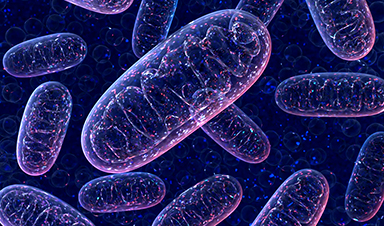

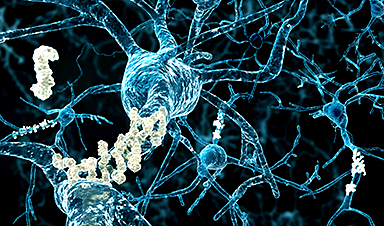




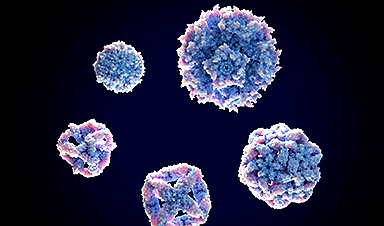

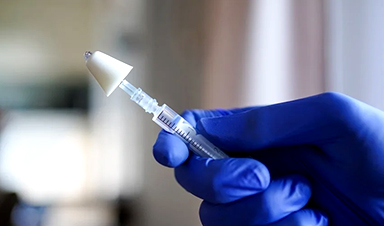









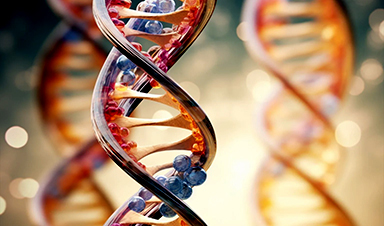







Leave A Comment